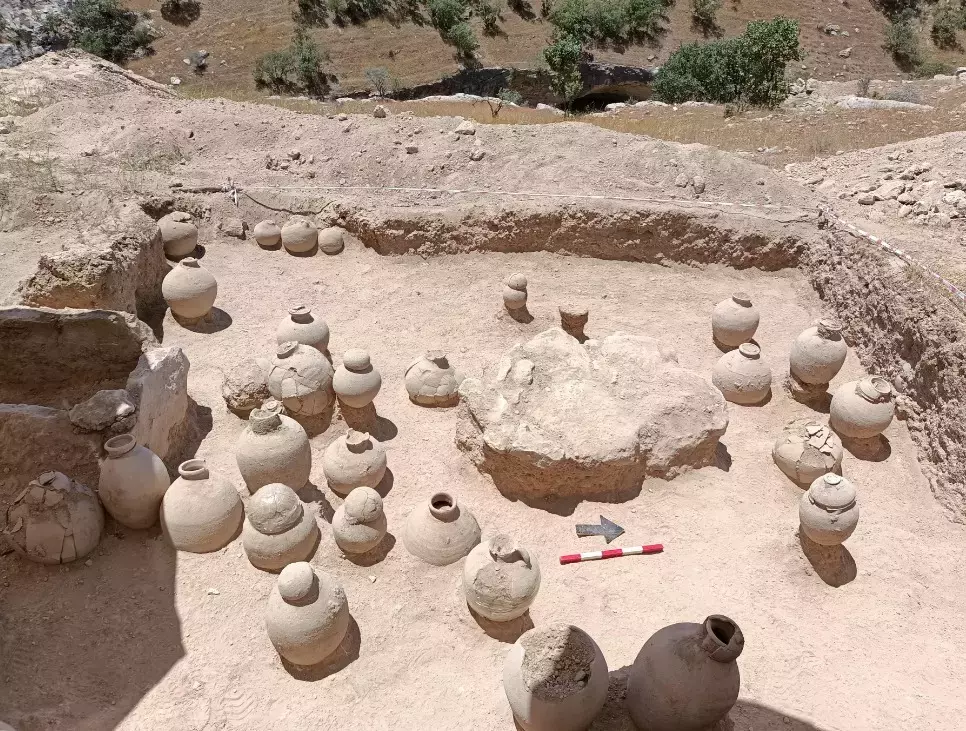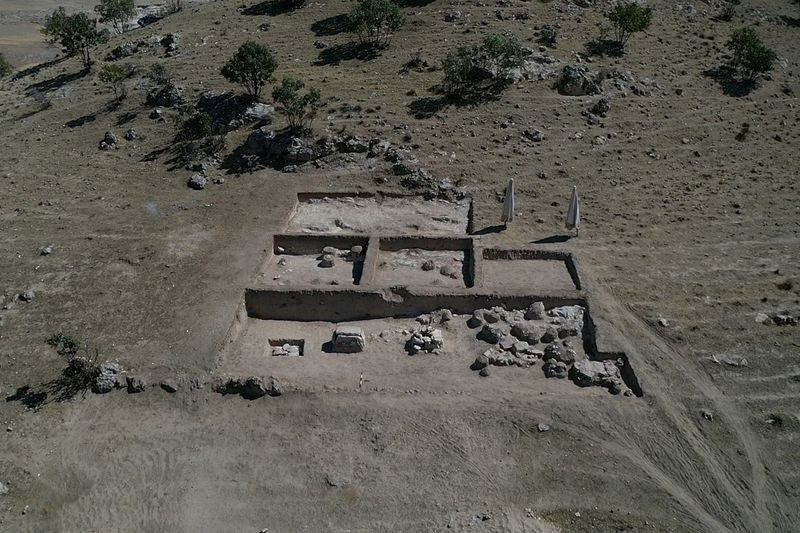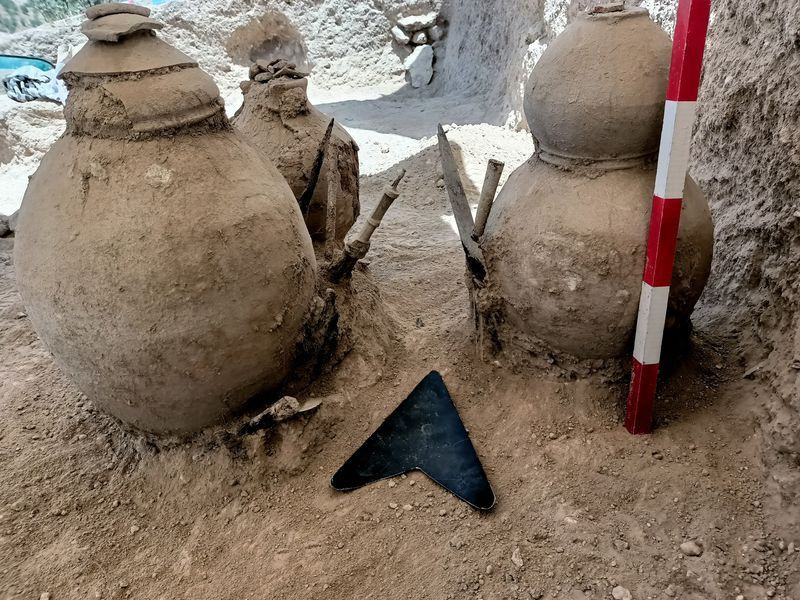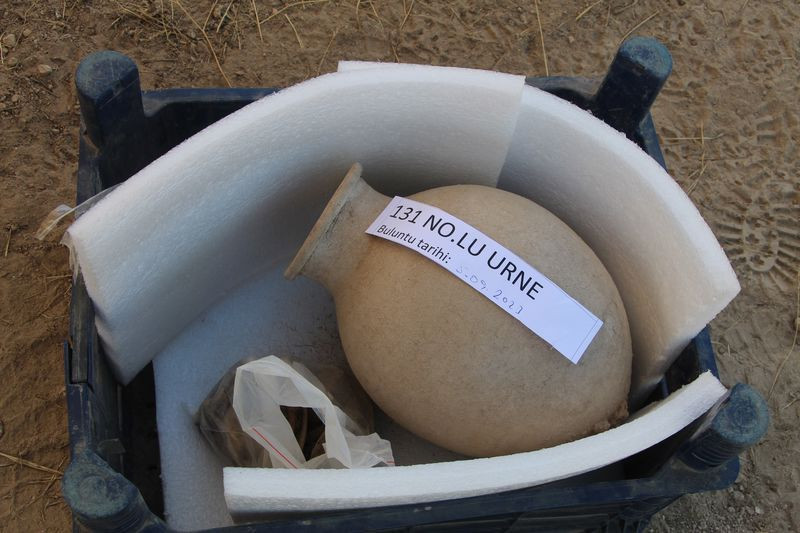
Museum officials discovered a 3000-year-old necropolis by chance
To go to the region to take photographs of the caves in Cehennem Deresi in the village of Bağözü, located in the Gercüş district of Batman, Hasankeyf museum officials accidentally discovered a 3000-year-old necropolis.
The necropolis is situated on steep cliffs overlooking the Tigris River, accessible by a five-kilometer hike.
Archaeologists initially opened eight trenches and discovered a necropolis spanning approximately 150 square meters, dating back to the first millennium BCE, belonging to the Iron Age Assyrian civilization. In this necropolis, they found around 100 pottery graves, rock-cut tombs, and earthen graves.

In the semaver graves, where the burnt bones of the deceased were buried, various items, including spears, arrowheads, daggers, knives, swords, and a wide range of war materials believed to belong to the deceased, were unearthed.
📣 Our WhatsApp channel is now LIVE! Stay up-to-date with the latest news and updates, just click here to follow us on WhatsApp and never miss a thing!!
Hasankeyf Museum Director and Excavation Director Şehmus Genç stated that the discovery of the Assyrian cylinder seal during the excavations would shed light on the region’s history.
Genç, stating that there is a lack of historical information regarding whether the Syrians lived in the region, expressed that they came across a necropolis area during surface surveys in the region they referred to as the Deraser area and initiated rescue excavations.
He stated, “We found many tomb structures here, including pottery graves, coffin graves, and earthen graves. The burial gifts uncovered in these graves excited us. Personal gifts were revealed during the excavations. The Assyrian cylinder seal found is important in determining the spread of the Assyrians. Among these gifts, we found spears, arrowheads, daggers, knives, swords, and various war tools.”

Speaking about the excavations, archaeologist Metin Ağrak mentioned that they found 150 graves during the excavations.
“This is a very important site for regional archaeology. It’s the first time that so many urn burials have been uncovered in a necropolis area in the region. Up until now, there were 27 of them found in Kavuşan Höyük. However, this discovery is of great significance for the region and regional archaeology. Most of the urn burials that were found have lids. In the unbroken urn burials, the remaining bones of the deceased are retrieved after cremation, but in those that have broken over time, the soil has entered them. From these urns, various items such as spears, beads, seals, bracelets, and offerings for the deceased are found. For those presumed to be male warriors, swords, spears, and knives are discovered, while for those presumed to be female, there are bronze or iron bracelets. In a few urns, bronze lids similar to those from the Urartian period have also been found. It’s a very complex site. As we continue to excavate, we encounter different things. We also found a large chest burial at the same location compared to the others. We’ll see what we will come across as we continue to excavate.”

“Our work begins at sunrise and continues until noon or the afternoon, depending on the weather conditions. We take the artifacts discovered here to the Hasankeyf Museum Directorate, following the necessary security measures. Our findings are under protection in the Hasankeyf Museum. They will be displayed in the museum after they have been cleaned and documented,” he said.
Ağrak explained that they initially went to the area to document the painted caves in Doruk Village, saying, “Upon the villagers’ warning, we came to this area. We noticed that there were pots in a few pits. Then we expanded the work, and now we have opened the eighth trench. In these excavations, we came across approximately 150 pottery graves. In this necropolis area, there are not only pottery graves but also coffin graves and earthen graves. After the deceased were cremated, the remaining bones and ashes were placed in pot graves. Restoration work is still ongoing. The dates will be revealed after the bones are examined in the laboratory. This was a very important discovery for the region and its archaeology.”
You may also like
- A 1700-year-old statue of Pan unearthed during the excavations at Polyeuktos in İstanbul
- The granary was found in the ancient city of Sebaste, founded by the first Roman emperor Augustus
- Donalar Kale Kapı Rock Tomb or Donalar Rock Tomb
- Theater emerges as works continue in ancient city of Perinthos
- Urartian King Argishti’s bronze shield revealed the name of an unknown country
- The religious center of Lycia, the ancient city of Letoon
- Who were the Luwians?
- A new study brings a fresh perspective on the Anatolian origin of the Indo-European languages
- Perhaps the oldest thermal treatment center in the world, which has been in continuous use for 2000 years -Basilica Therma Roman Bath or King’s Daughter-
- The largest synagogue of the ancient world, located in the ancient city of Sardis, is being restored











Leave a Reply